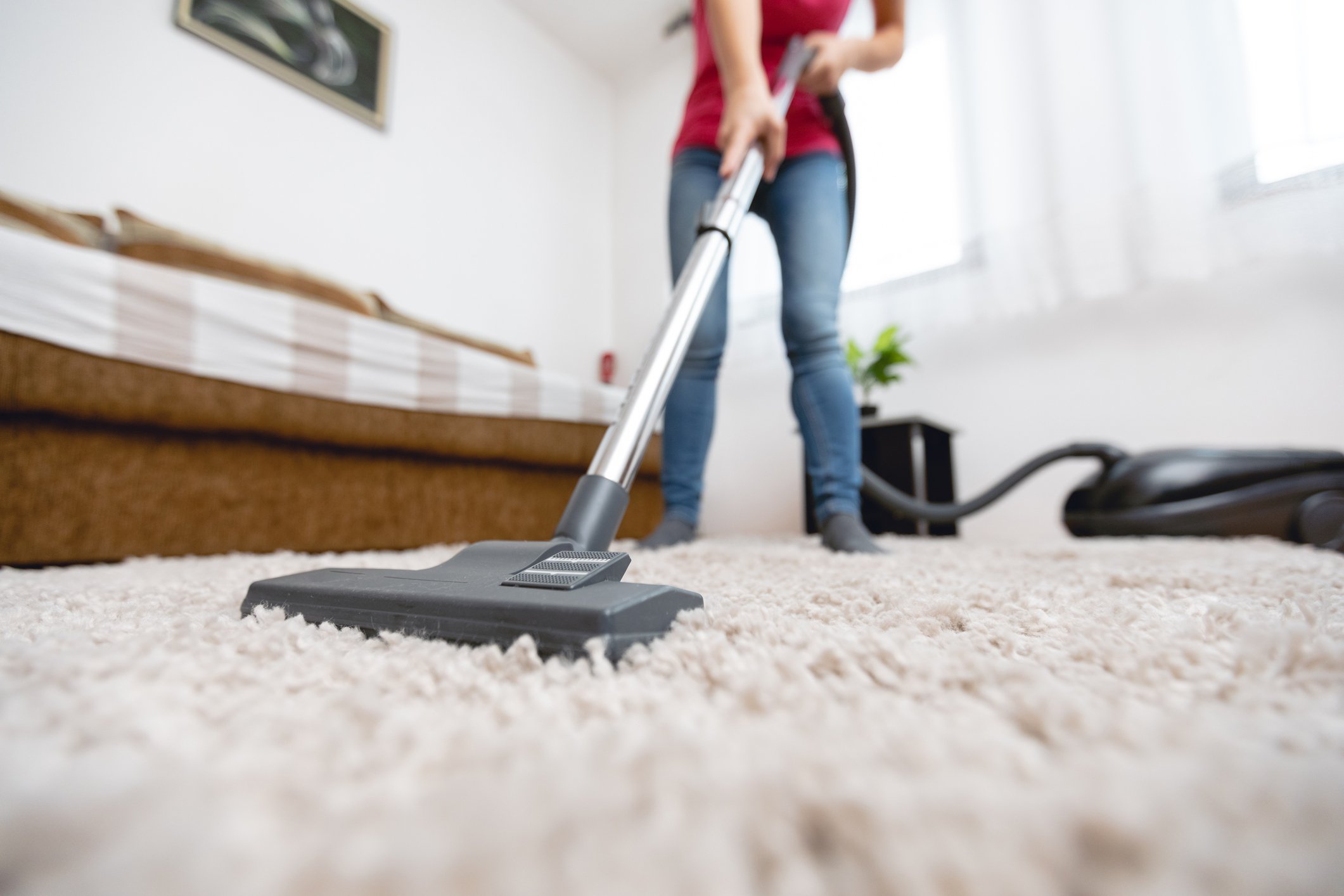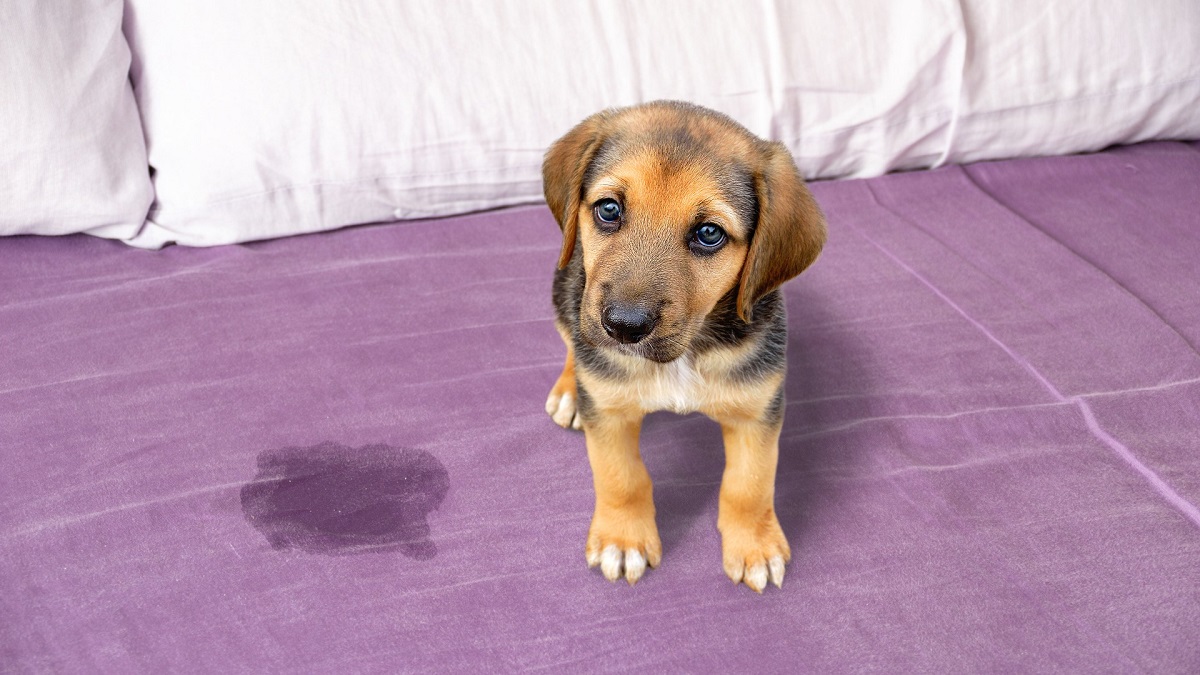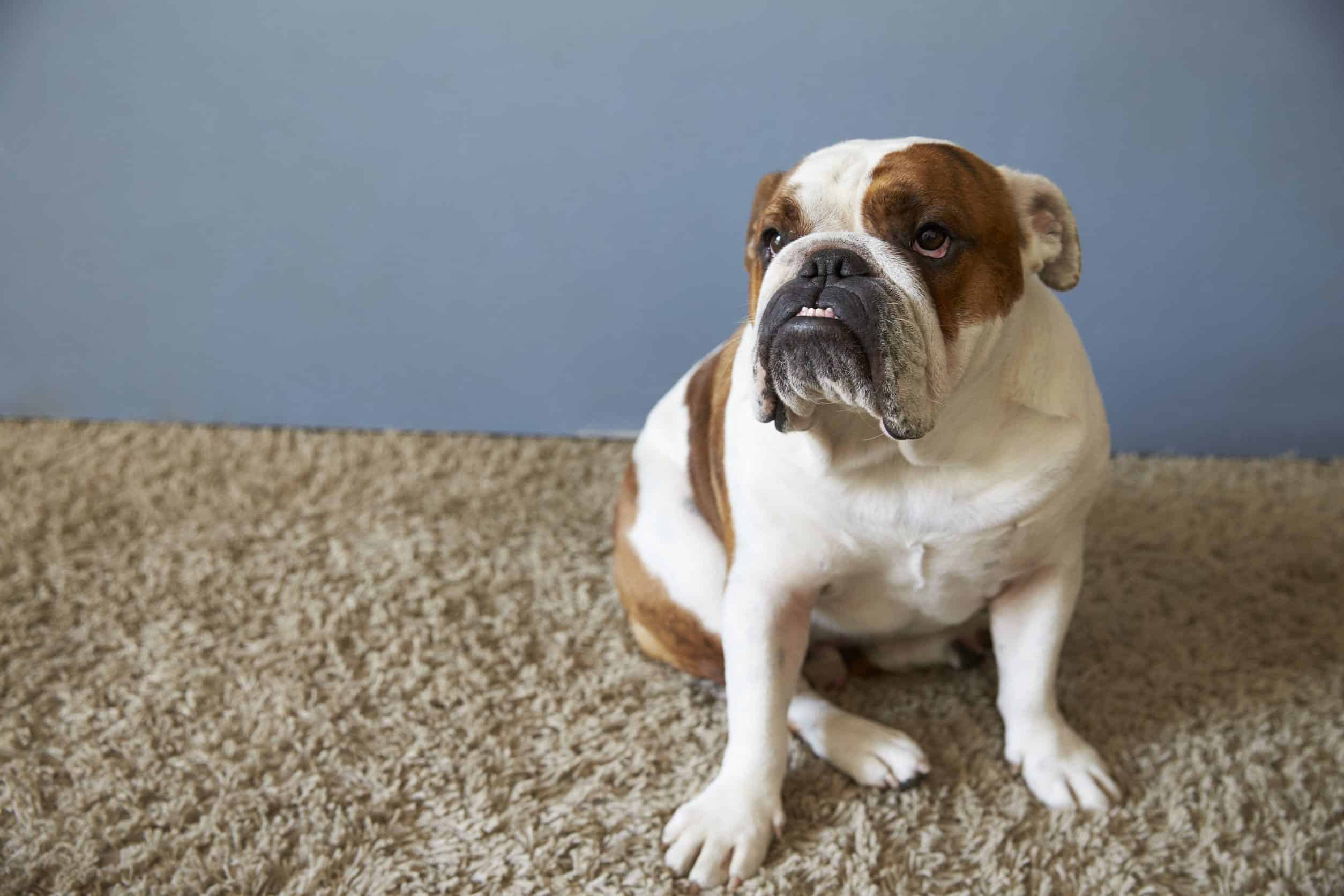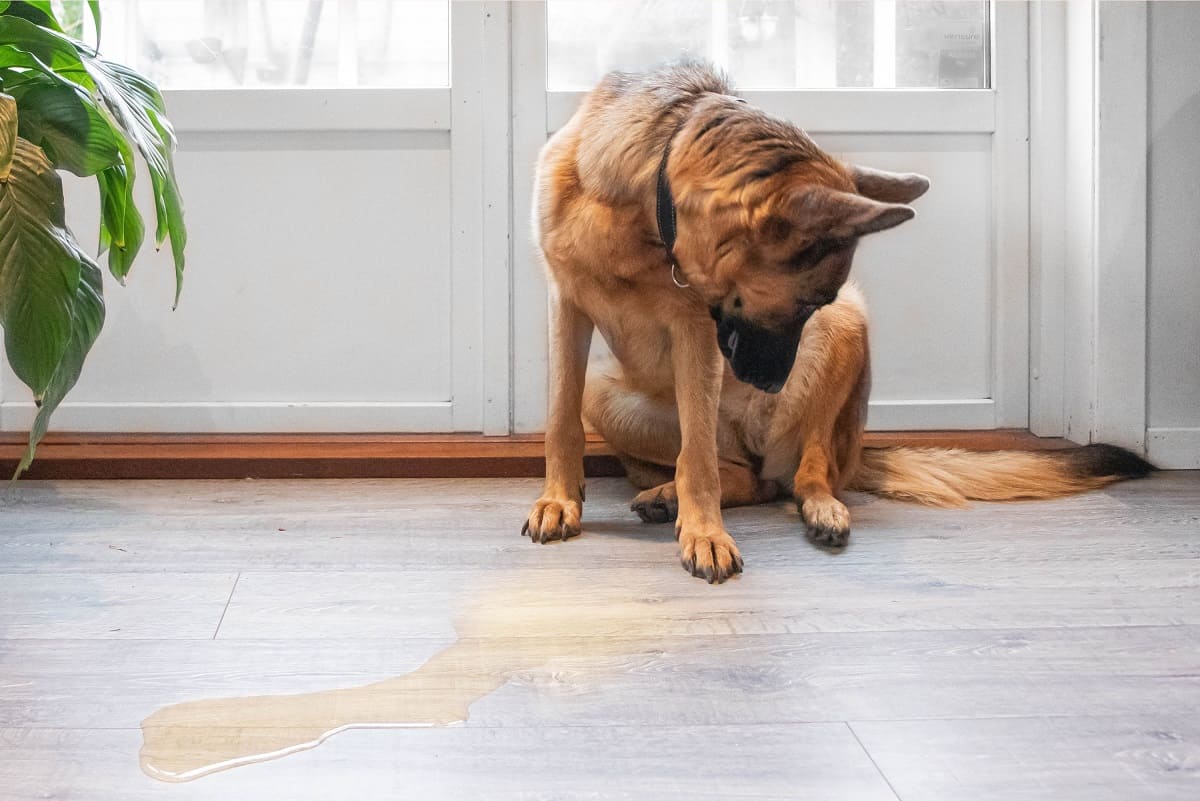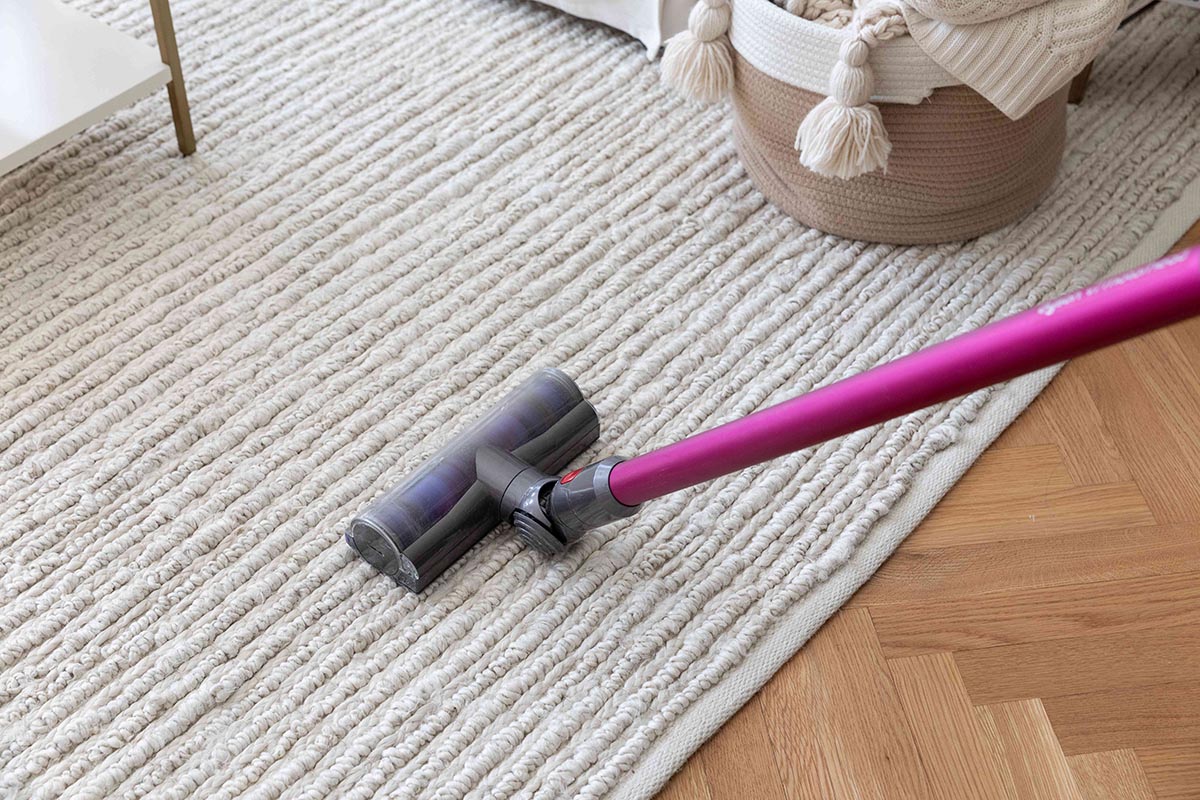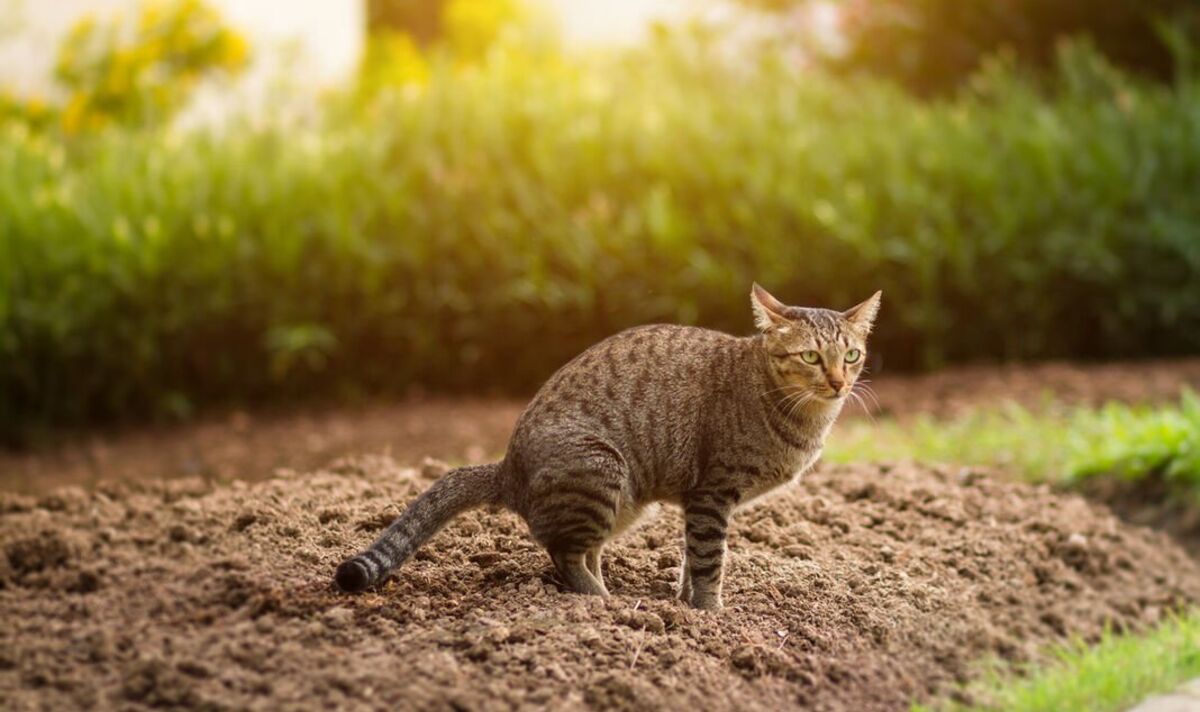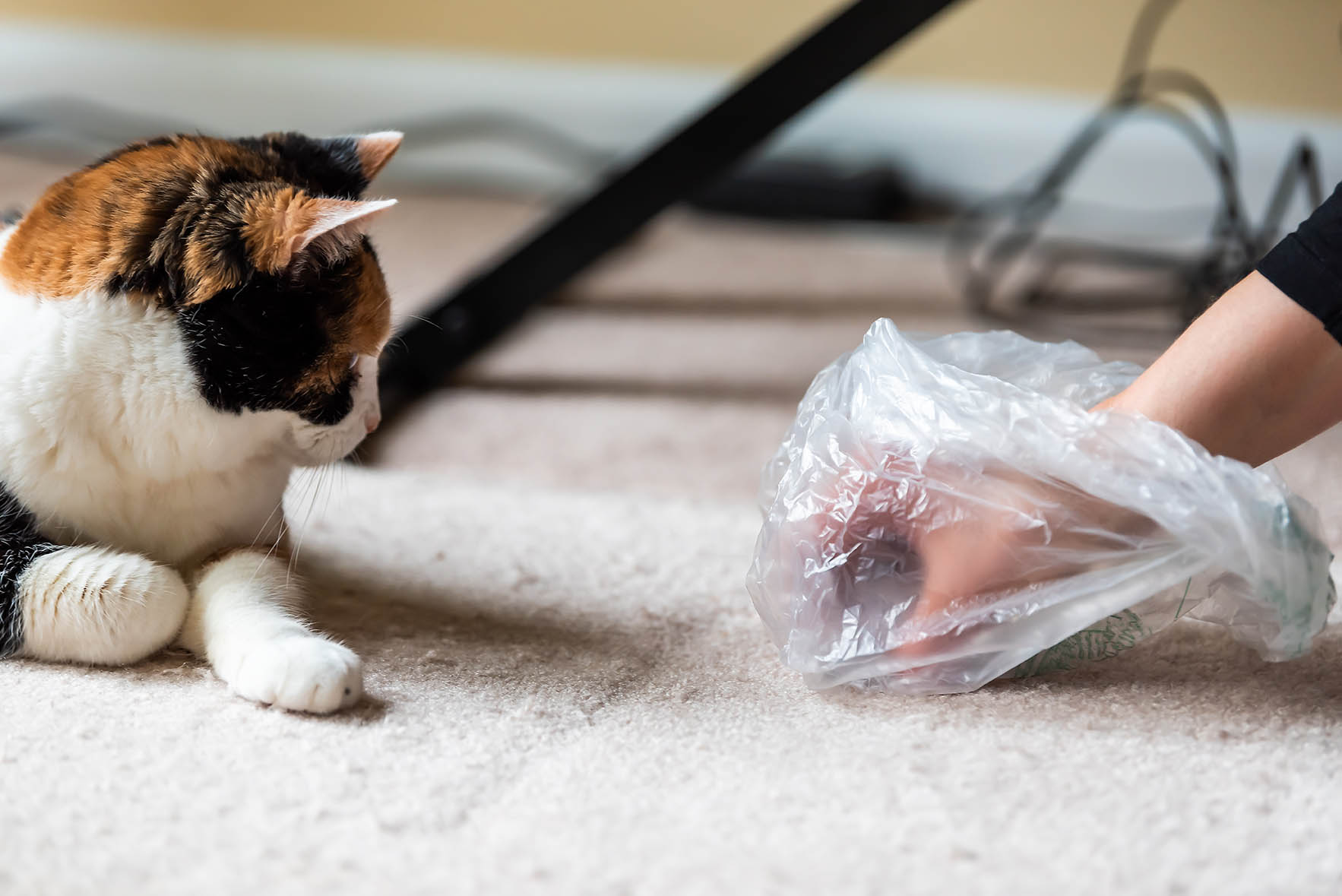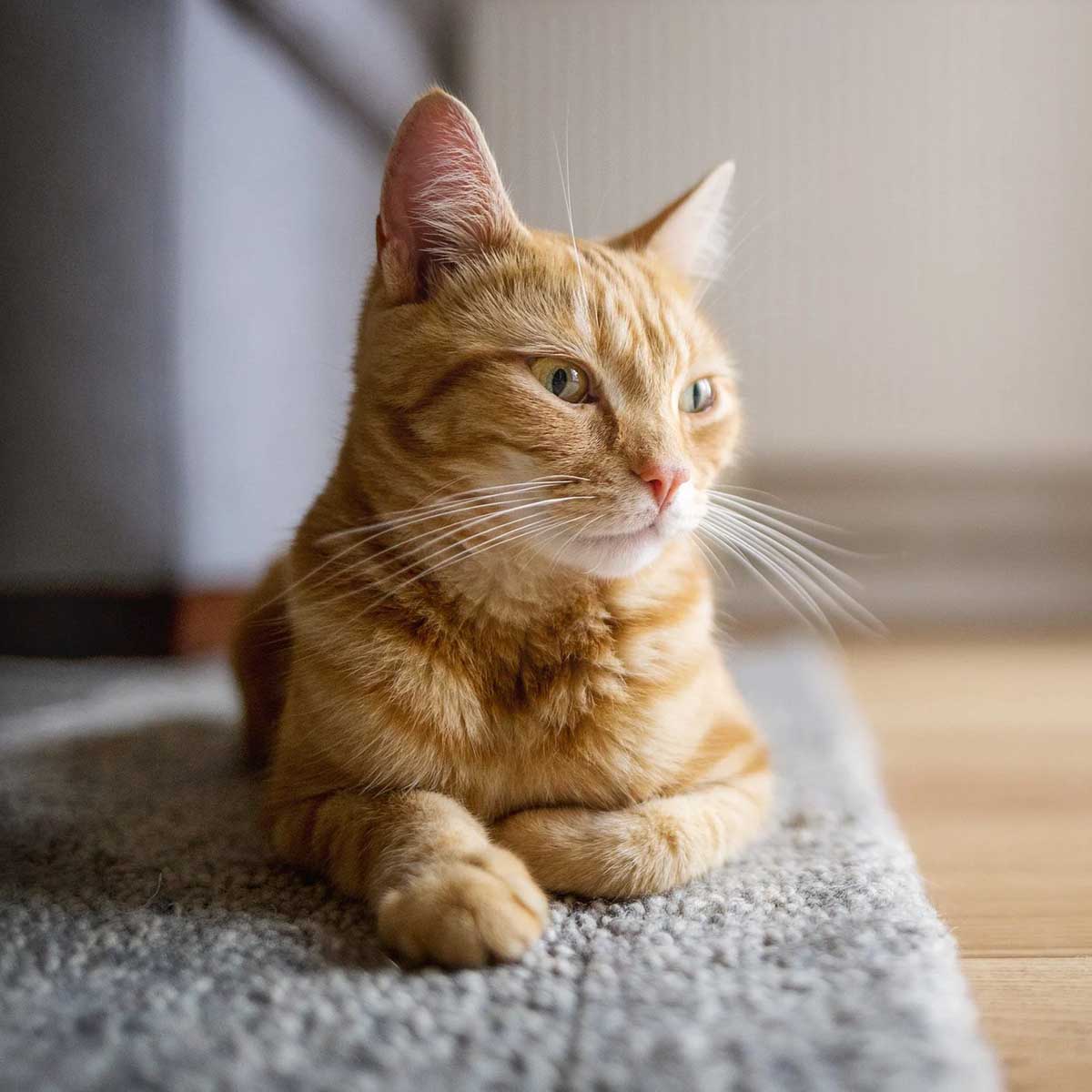

Articles
How To Stop Cats From Peeing On The Carpet
Modified: August 23, 2024
Discover effective articles on how to prevent cats from peeing on your carpet. Find practical solutions to keep your home clean and odor-free.
(Many of the links in this article redirect to a specific reviewed product. Your purchase of these products through affiliate links helps to generate commission for Storables.com, at no extra cost. Learn more)
Introduction
Dealing with cats peeing on the carpet can be frustrating and unpleasant. Whether you own a cat or multiple cats, this behavior can leave you scrambling for solutions to solve the problem. Understanding the reasons behind this behavior and implementing appropriate measures can help address the issue effectively and create a harmonious environment for both you and your feline friend.
There are several reasons why cats may choose to urinate on the carpet instead of their litter box. Identifying the underlying cause is crucial in order to come up with an appropriate solution. It could be due to territory marking, medical issues, or stress and anxiety.
Territory marking is a natural behavior in cats. They use their urine scent to mark their territory and communicate with other cats. If they feel threatened by other animals invading their space, they may resort to marking the carpet as a way of establishing their territory.
Medical issues can also contribute to inappropriate urination in cats. Conditions like urinary tract infections, bladder stones, or kidney diseases can cause discomfort and lead your cat to seek alternative places to relieve themselves.
Stress and anxiety can have a significant impact on a cat’s behavior. Changes in the household, such as a new pet, a new baby, or even rearranging furniture, can trigger anxiety in cats and result in inappropriate urination as a coping mechanism.
To effectively address the issue, it is essential to identify the problem areas where your cat is urinating. Observe their behavior closely and look for patterns. If you notice your cat consistently urinating in the same spot on the carpet, it’s a clear indication of a problem area.
Using a blacklight can also help detect hidden urine stains that are not visible to the naked eye. Turn off the lights in the room and use a blacklight to reveal any fluorescent spots on the carpet. This will help you identify the extent of the problem and target those areas for treatment.
In addition to visual inspection, it’s important to eliminate the odor and stain left by your cat’s urine. Start by blotting the area gently with paper towels or cloth to absorb as much moisture as possible. Avoid rubbing, as it can further spread the stain and odor.
Key Takeaways:
- Understanding the reasons behind your cat’s behavior is crucial. It could be territory marking, medical issues, or stress and anxiety. Identifying the problem areas and eliminating odor and stain are essential steps in addressing the issue effectively.
- Providing alternative options, managing stress and anxiety, and seeking veterinary help are crucial in addressing the issue of cats peeing on the carpet. By combining these strategies, you can create a peaceful coexistence with your feline companion.
Read more: How To Stop A Cat From Peeing On Rugs
Understanding Why Cats Pee on the Carpet
Cats are generally clean animals that prefer to use a litter box for their bathroom needs. However, there are instances where cats may pee on the carpet instead. Understanding the reasons behind this behavior is essential in order to address the issue effectively. Here are three common reasons why cats may choose to pee on the carpet:
Territory Marking
Cats are territorial animals that use various methods to mark their territory and communicate with other cats. One of these methods is through urine marking. When cats spray or pee on the carpet, they are leaving behind their scent as a way of claiming their territory. This behavior may be triggered by the presence of other animals in the house, such as new pets or a stray cat that visits the area. Cats are sensitive to changes in their environment, and if they feel threatened or challenged, they may resort to urine marking to assert dominance and establish their territory.
Medical Issues
In some cases, cats may pee on the carpet due to underlying medical issues. Conditions such as urinary tract infections, bladder stones, or kidney diseases can cause discomfort, pain, or a frequent urge to urinate. As a result, cats may associate the litter box with pain or discomfort and choose to pee on the carpet instead. If you notice that your cat is frequently urinating outside of the litter box and displaying other signs of discomfort, it is important to consult with a veterinarian to rule out any medical conditions.
Stress or Anxiety
Cats are sensitive creatures that can easily become stressed or anxious. Changes in their environment, such as moving to a new house, the addition of a new family member, or even rearranging furniture, can trigger stress and anxiety in cats. In response to these stressful situations, cats may exhibit inappropriate urination as a way of coping. The carpet may be seen as a more comforting and familiar substrate compared to the litter box. It’s important to provide a calm and stable environment for your cat and to address any sources of stress or anxiety to prevent them from seeking alternative places to relieve themselves.
Understanding the reasons behind your cat’s behavior is crucial in order to address the issue appropriately. By identifying whether it is territory marking, a medical issue, or stress and anxiety, you can implement targeted solutions to encourage your cat to use the litter box and prevent them from peeing on the carpet. In the next sections, we will explore strategies to identify problem areas, eliminate odor and stain, and provide alternative options for your cat.
Read more: How To Stop Cat From Scratching The Carpet
Identifying the Problem Areas
In order to address the issue of cats peeing on the carpet, it is crucial to identify the specific problem areas where they are urinating. This will help you focus your efforts on those areas and implement targeted solutions. Here are three methods to help you identify the problem areas:
Observing Cat Behavior
One of the first steps in identifying the problem areas is to closely observe your cat’s behavior. Pay attention to any signs that indicate they are about to urinate or are actively urinating on the carpet. Cats often display certain behaviors before they pee, such as sniffing the carpet, scratching the floor, or crouching down in preparation. By observing these behaviors, you can anticipate when and where your cat is likely to pee and take appropriate action.
Using a Blacklight
In some cases, urine stains on the carpet may not be visible to the naked eye. This is especially true for older stains or if the carpet has a similar color to the urine. Using a blacklight can help detect these hidden urine stains as they will appear fluorescent under the light. Turn off the lights in the room and scan the carpet with a blacklight, focusing on areas where your cat frequently spends time or where you suspect they may have urinated. This will help you locate the problem areas and treat them accordingly.
Detecting Urine Odor
Another way to identify problem areas is by detecting the odor of urine. Even if you can’t visibly see the stains, the smell of urine can linger on the carpet. Get down close to the carpet and sniff the areas where you suspect your cat has urinated. If you detect a strong smell of urine, it is a clear indication of a problem area that needs to be addressed. If necessary, you can also use your hands or gloves to feel for any dampness on the carpet, as it may indicate recent urination.
By using a combination of these methods – observing cat behavior, using a blacklight, and detecting urine odor – you can effectively identify the problem areas where your cat is peeing on the carpet. Once you have a clear understanding of these areas, you can move on to eliminating the odor and stain, as well as implementing strategies to prevent further incidents. We will delve into these strategies in the following sections.
Read more: How To Stop Cat Peeing On Furniture
Eliminating the Odor and Stain
Once you have identified the problem areas where your cat has been peeing on the carpet, it is crucial to eliminate the odor and stain to prevent your cat from being drawn back to those spots. Here are three effective methods for eliminating the odor and stain:
Blotting the Area
As soon as you discover fresh cat urine on the carpet, it is important to act quickly. Grab a stack of paper towels or clean cloth and gently blot the area to soak up as much urine as possible. Avoid rubbing the carpet, as this can spread the stain and push the urine deeper into the carpet fibers. Continue blotting until the area feels only slightly damp. If the urine has already dried, you can dampen the area with a mixture of water and a mild detergent before blotting to rehydrate the urine stain.
Using an Enzymatic Cleaner
While blotting removes the excess urine, it does not fully eliminate the odor-causing components in the urine. To effectively remove the odor and break down the remaining urine particles, it is recommended to use an enzymatic cleaner specifically designed for pet stains. Enzymes in these cleaners work to break down the uric acid crystals by digesting them at a molecular level. Follow the instructions on the cleaner’s label and thoroughly cover the stained area, ensuring the cleaner penetrates the carpet fibers and reaches the underlying padding. Allow the enzymatic cleaner to sit for the recommended amount of time, usually about 15-20 minutes, before blotting up the excess moisture with paper towels or a clean cloth.
Sprinkling Baking Soda
After treating the stained area with an enzymatic cleaner, it is beneficial to neutralize any remaining odor and absorb lingering moisture. Sprinkle a generous amount of baking soda directly onto the affected area. Baking soda has naturally deodorizing properties and works to absorb odors. Gently massage the baking soda into the carpet fibers using a soft-bristled brush or your fingers. Let the baking soda sit on the carpet for several hours or overnight to allow it enough time to absorb the odors. Once the baking soda has dried, vacuum the area thoroughly to remove the baking soda residue, leaving behind a fresh and odor-free carpet.
By following these steps and effectively eliminating the odor and stain, you can discourage your cat from revisiting the same spot to urinate. However, keep in mind that persistent or repeated incidents may require additional measures, such as changing the litter box setup and providing alternative options for your cat. These strategies will be discussed in the next sections as we continue to explore ways to address the issue of cats peeing on the carpet.
Changing the Litter Box Setup
A well-maintained and enticing litter box setup can play a crucial role in preventing cats from peeing on the carpet. By addressing any issues or shortcomings with the litter box, you can encourage your cat to consistently use it for their bathroom needs. Here are three effective strategies for changing the litter box setup:
Provide Multiple Litter Boxes
One common mistake that cat owners make is providing only one litter box for multiple cats. Cats are naturally territorial animals and may not feel comfortable sharing a litter box with other cats. This can lead to stress and conflicts, which may result in some cats choosing to pee outside the litter box. To prevent this, ensure that you have enough litter boxes available for your cats. As a general rule of thumb, have one litter box per cat, plus an extra one. This allows each cat to have their own designated space and reduces the likelihood of litter box-related issues.
Scoop Regularly
Regularly scooping the litter box is essential to maintain cleanliness and prevent odors from building up. Cats are clean animals and prefer a tidy litter box. Failing to scoop the litter box regularly can make it less appealing for your cat to use, and they may seek out alternative options, such as the carpet, as a result. Aim to scoop the litter box at least once or twice a day, removing any clumps or solid waste. Also, periodically empty and replace the litter entirely to ensure freshness. If you notice any urine or feces outside the litter box, clean it up promptly and thoroughly, as the lingering scent can still attract your cat to that area.
Try Different Types of Litter
Just like humans, cats have personal preferences when it comes to the type of litter they prefer. Some cats may have a strong aversion to certain litter textures, scents, or materials. If your cat consistently avoids using the litter box, it may be worth experimenting with different types of litter to find the one that your cat prefers. Try out different brands, textures (clumping or non-clumping), and materials (clay, silica, corn, wheat, etc.). Offer a variety of options in separate litter boxes to give your cat a choice. Observe their behavior and litter box usage to determine which type of litter they seem most comfortable with and continue using that type moving forward.
By providing multiple litter boxes, scooping regularly, and experimenting with different types of litter, you can create a more appealing and comfortable environment for your cat to use the litter box. These changes can minimize the likelihood of your cat peeing on the carpet and encourage them to consistently use the litter box instead. However, if the issue persists, it may be necessary to explore other strategies, such as providing alternative options for your cat, which will be discussed in the next section.
Providing Alternative Options
If your cat continues to pee on the carpet despite addressing litter box issues, it may be helpful to provide alternative options for your cat within your home. By offering cat-friendly alternatives, you can redirect their behavior away from the carpet and encourage appropriate toileting habits. Here are three alternative options to consider:
Cat-Friendly Scratching Posts
Scratching is a natural behavior for cats, and providing them with appropriate outlets for this behavior can help redirect their focus. Invest in cat-friendly scratching posts or scratching boards that are tall enough for your cat to fully stretch out their body. Place the scratching posts strategically around your home, including areas near the carpet that your cat has been targeting. By offering enticing scratching surfaces, you can help redirect their urge to mark territory or relieve stress through inappropriate urination.
Vertical Space Availability
Cats are known for their love of climbing and perching in high places. Lack of vertical space can contribute to stress and anxiety in cats, which may manifest as inappropriate urination. To address this, provide your cat with access to vertical spaces, such as cat trees or wall-mounted shelves. These vertical spaces not only provide your cat with a vantage point to observe their surroundings but also offer them a safe and elevated area to retreat to. By increasing vertical space availability, you can create a more enriching environment for your cat and help alleviate any stress or anxiety that may be contributing to their behavior.
Providing Hiding Spots
Creating hiding spots throughout your home can also help alleviate stress in cats. Hiding spots provide a sense of security and a place for your cat to retreat to when they feel overwhelmed or anxious. This can be achieved through the use of cat tunnels, enclosed beds, or even strategically placed boxes with openings for your cat to enter. By providing these hiding spots, you give your cat the opportunity to have their own safe space where they can feel calm and secure, reducing the likelihood of them seeking out inappropriate places to urinate, such as the carpet.
By offering alternative options like cat-friendly scratching posts, vertical spaces, and hiding spots, you can redirect your cat’s behavior away from the carpet. These alternatives provide outlets for natural feline behaviors and help create a more stimulating and stress-free environment for your cat. However, if the issue persists, it may be beneficial to explore further options, such as managing stress and anxiety, as we will discuss in the following section.
Read more: How To Stop My Dog From Peeing On My Carpet
Managing Stress and Anxiety
Stress and anxiety can significantly influence a cat’s behavior, including their choice to pee on the carpet. By addressing and managing stressors in your cat’s environment, you can help alleviate their anxiety and reduce the likelihood of inappropriate urination. Here are three effective strategies for managing stress and anxiety in cats:
Creating a Calm Environment
Create a calm and peaceful environment for your cat by minimizing loud noises, sudden disruptions, and stressful stimuli. This can be achieved by providing a designated quiet area where your cat can retreat to when they need a break. Ensure that the litter box is placed in a quiet and accessible location, away from high-traffic areas or noisy appliances. Additionally, maintaining a consistent daily routine for feeding, playtime, and interaction can provide a sense of predictability and security for your cat, reducing their overall stress levels.
Using Pheromone Diffusers
Pheromones are chemical substances that cats naturally produce to communicate and mark their territory. Synthetic versions of these pheromones are available in the form of diffusers, sprays, or collars. Feliway is a popular brand that mimics the feline facial pheromone, which promotes a sense of security and can help reduce stress and anxiety in cats. By using pheromone diffusers in areas where your cat spends most of their time, you can create a calming environment and decrease the likelihood of urine marking or inappropriate elimination.
Engaging in Interactive Play
Regular interactive play sessions with your cat can help relieve stress and redirect their energy in a positive way. Engage your cat in play sessions using toys that mimic prey, such as interactive wand toys or chasing toys. This not only provides mental and physical stimulation but also helps build a bond between you and your cat. Play sessions should be conducted in a safe and stimulating environment while avoiding any aggressive or rough play. By promoting regular playtime, you can help reduce stress and anxiety in your cat, ultimately decreasing the likelihood of carpet peeing incidents.
Managing stress and anxiety requires a holistic approach, and it may not be an overnight solution. It’s important to have patience and consistency while implementing these strategies. However, if the problem persists, it may be beneficial to seek veterinary help to rule out any underlying medical issues or consult with a feline behaviorist for more specialized advice.
By creating a calm environment, using pheromone diffusers, and engaging in interactive play, you can significantly reduce stress and anxiety in your cat, which can ultimately lead to a decrease in inappropriate urination incidents on the carpet. In the next section, we will discuss the importance of seeking veterinary help and professional guidance if the issue persists.
Read more: Why Do Cats Pee On Carpet
Seeking Veterinary Help
If your cat continues to pee on the carpet despite your best efforts in addressing litter box issues, providing alternative options, and managing stress, it may be necessary to seek veterinary help. A veterinarian can help determine if there are any underlying medical issues contributing to your cat’s inappropriate urination. Here are three important aspects to consider when seeking veterinary help:
Ruling out Medical Issues
Medical conditions such as urinary tract infections, bladder stones, or kidney diseases can cause discomfort and urination problems in cats. It is crucial to have your cat thoroughly examined by a veterinarian to rule out any potential medical issues. They may recommend conducting urine tests, blood work, or imaging studies to accurately diagnose any underlying conditions. By identifying and treating any medical issues, you can address the root cause of your cat’s behavior and implement appropriate treatment plans.
Discussing Behavioral Medications
In some cases, behavioral medications may be necessary to help manage your cat’s inappropriate urination. These medications can help reduce anxiety, lower stress levels, and modify your cat’s behavior. If the veterinarian determines that your cat’s urination problems are primarily related to behavioral issues, they can discuss the option of prescribing behavioral medications. However, it is important to note that behavioral medications should always be used in conjunction with behavior modification techniques and under the guidance of a veterinary professional.
Consulting with a Feline Behaviorist
If the issue persists and medical issues have been ruled out, consulting with a feline behaviorist can be highly beneficial. Feline behaviorists are professionals who specialize in understanding cat behavior and can provide valuable insight and guidance. They can conduct a thorough assessment of your cat’s behavior, environment, and interactions to identify any triggers or underlying factors contributing to the inappropriate urination. With their expertise, they can develop a customized behavior modification plan to address the issue and help you create a harmonious relationship with your cat.
Remember, addressing inappropriate urination can be a complex issue, and seeking professional help is important for proper diagnosis and treatment. By working closely with veterinarians and feline behaviorists, you can gain a better understanding of your cat’s behavior and implement effective strategies to resolve the problem. With time, patience, and the right guidance, you can successfully address the issue of cats peeing on the carpet and create a happier and healthier living environment for both you and your feline friend.
Read more: How To Get Cat Pee Out Of A Carpet
Conclusion
Dealing with cats peeing on the carpet can be a frustrating and challenging situation, but it is important to approach it with patience, understanding, and a methodical approach. By understanding why cats engage in this behavior and implementing appropriate measures, you can address the issue effectively and create a harmonious environment for both you and your feline companion.
Understanding the reasons behind your cat’s behavior is crucial. It can be territory marking, medical issues, or stress and anxiety. Identifying the problem areas where your cat is urinating is the first step in addressing the issue. By observing their behavior, using a blacklight, and detecting urine odor, you can pinpoint the areas that require attention.
Eliminating the odor and stain left by your cat’s urine is essential to prevent them from revisiting the same spot. Blotting the area, using an enzymatic cleaner, and sprinkling baking soda can effectively eliminate the odor and stain, making the area less enticing for your cat to urinate on.
Changing the litter box setup is another important aspect to consider. Providing multiple litter boxes, scooping regularly, and trying different types of litter can make the litter box more appealing and reduce the likelihood of your cat choosing the carpet instead.
Providing alternative options for your cat can also help redirect their behavior away from the carpet. Cat-friendly scratching posts, vertical space availability, and providing hiding spots offer outlets for natural behaviors and create a more stimulating and stress-free environment for your cat.
Managing stress and anxiety in your cat is crucial. Creating a calm environment, using pheromone diffusers, and engaging in interactive play can help alleviate stress and reduce the likelihood of inappropriate urination. If the problem persists, seeking veterinary help is important. Ruling out medical issues, discussing the use of behavioral medications, and consulting with a feline behaviorist can provide valuable insight and guidance.
In conclusion, addressing the issue of cats peeing on the carpet requires patience, observation, and proactive measures. By combining proper litter box management, providing alternative options, managing stress and anxiety, and seeking professional help when necessary, you can successfully resolve the issue and create a peaceful coexistence with your feline companion. Remember, every cat is unique, and finding the right approach may require some trial and error. With love, patience, and understanding, you can create a happy and healthy environment for both you and your beloved cat.
Frequently Asked Questions about How To Stop Cats From Peeing On The Carpet
Was this page helpful?
At Storables.com, we guarantee accurate and reliable information. Our content, validated by Expert Board Contributors, is crafted following stringent Editorial Policies. We're committed to providing you with well-researched, expert-backed insights for all your informational needs.
